We’ve all done it—reached into the pantry, pulled out that half-used jar or nearly full bag of something, given it a quick glance, maybe even a sniff, and thought, “Eh, it’s probably fine.” But when it comes to expired food, appearances can be deceiving—and so can those “best by” dates we tend to ignore. What looks harmless could be quietly spoiling behind the scenes, losing flavor, nutrients, or worse—breeding harmful bacteria that put your health at risk.
The truth is, many of us treat our pantry like a food time capsule, keeping items around far past their prime. Some expired foods become tasteless and stale, while others—especially those with oils, preservatives, or natural ingredients—can turn rancid or dangerous without obvious signs. And while tossing food can feel wasteful, keeping expired items can be even costlier in the long run—especially if they cause a stomach bug, food poisoning, or worse.
From seemingly safe spices to opened sauces, long-forgotten grains, or that jar of peanut butter you swear you just opened “recently,” there’s a good chance your kitchen is hiding a few expired culprits. And unlike refrigerated items that demand more regular attention, pantry foods often slip under the radar.
So before you plan your next meal or snack straight from the shelf, take a moment to read this list. These 15 expired foods are among the most commonly (and mistakenly) kept in American homes—and they may be quietly sabotaging your health or your recipes. If any of these are lurking in your cupboards, it’s time to check the label, trust your instincts, and—when in doubt—toss it out. Your gut (and your tastebuds) will thank you.
1. Dented or Bulging Canned Goods
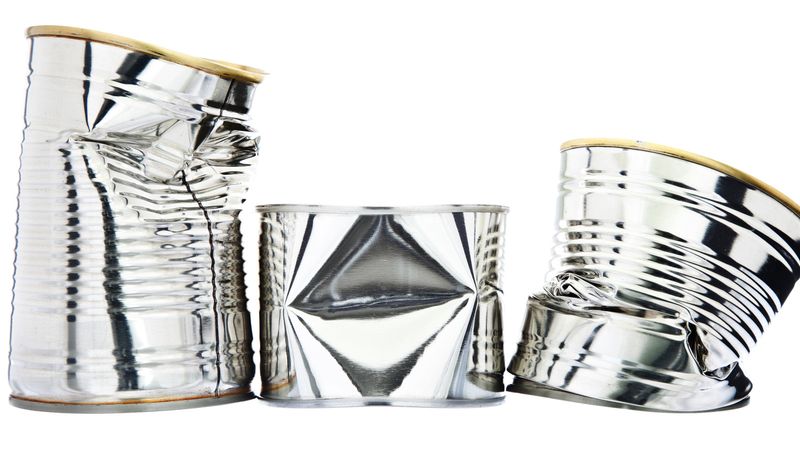
Those innocent-looking dents in your canned beans might be hiding a deadly secret. When cans are compromised through denting or damage, they can allow Clostridium botulinum bacteria to grow inside, producing one of the most lethal toxins known to science.
Bulging cans are sending you an urgent warning sign – gases from bacterial growth are pushing outward. This isn’t a maybe-it’s-fine situation; this is a definite danger zone.
Never taste-test suspicious canned goods. Even a tiny amount of botulism toxin can cause paralysis or death. When in doubt, throw it out – no leftover soup is worth a trip to the emergency room.
2. Whole-Grain Flour

Unlike its refined white cousin, whole-grain flour contains the oil-rich germ and bran portions of the grain. These healthy components ironically make it spoil faster due to natural oils that turn rancid when exposed to oxygen and light.
Rancid flour won’t make you sick immediately, but it tastes bitter and unpleasant. The nutritional quality also degrades significantly as beneficial fatty acids oxidize. Most people don’t realize their whole wheat flour has gone bad until their baked goods come out tasting off.
Store whole-grain flours in airtight containers in the freezer to extend shelf life from a mere three months at room temperature to over a year.
3. Natural Peanut Butter
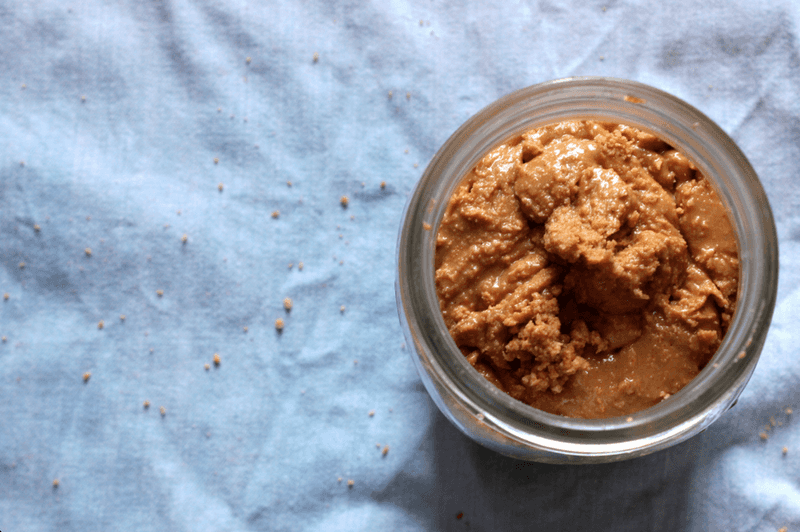
The oil separation in natural peanut butter isn’t just messy – it’s the first sign that spoilage is possible. Without artificial stabilizers, the natural oils rise to the top and expose more surface area to oxygen, accelerating rancidity.
Many people mistakenly keep natural peanut butter in the pantry for months. Once opened, those delicious ground nuts begin a countdown to spoilage that moves much faster than commercially processed versions.
The telltale signs include a sharp, paint-like smell or dark spots. Always refrigerate after opening and consume within 1-3 months. For longer storage, the freezer works wonders – just portion it first for easier thawing.
4. Spices and Dried Herbs
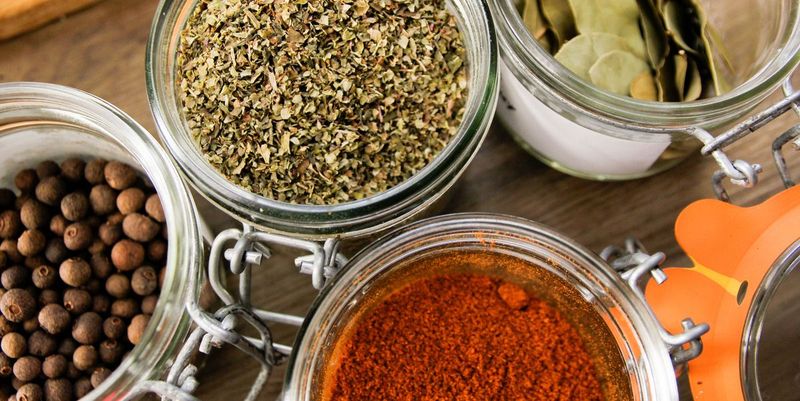
Remember those oregano flakes that moved with you three apartments ago? While they won’t make you sick, they’re probably just taking up space. Dried herbs and ground spices lose their aromatic compounds over time, becoming flavorless shadows of their former selves.
Ground spices typically maintain peak flavor for just 2-3 years. Whole spices fare better, lasting up to 4 years before quality significantly declines. The degradation happens so gradually you might not notice until you try a fresh replacement.
Test your spices by crushing a pinch between your fingers and sniffing – if there’s little aroma, they’re past their prime. Date your spice jars and implement a regular replacement schedule for culinary success.
5. Baking Powder
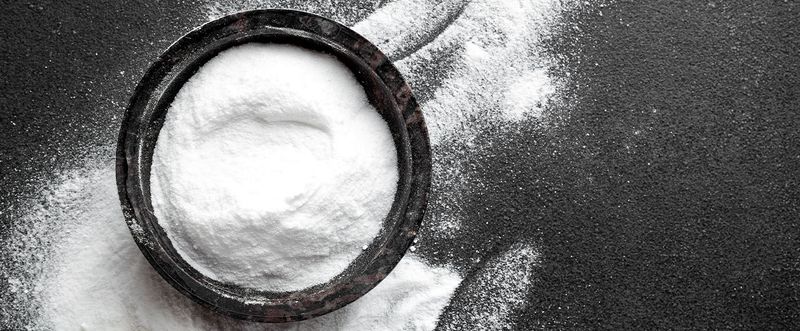
The chocolate cake that mysteriously refused to rise might be telling you something about your baking powder. This leavening agent doesn’t spoil in the traditional sense, but it definitely expires in terms of functionality.
Baking powder contains both an acid and a base that react when moistened to release carbon dioxide bubbles. Over time, especially when exposed to humidity, these components can prematurely react or degrade. Your baked goods become dense disappointments instead of fluffy delights.
Test your baking powder by mixing a teaspoon with hot water – vigorous bubbling means it’s still good. No reaction? It’s time for a fresh can. Most baking powder loses effectiveness after being open for about 6-12 months.
6. Cooking Oils
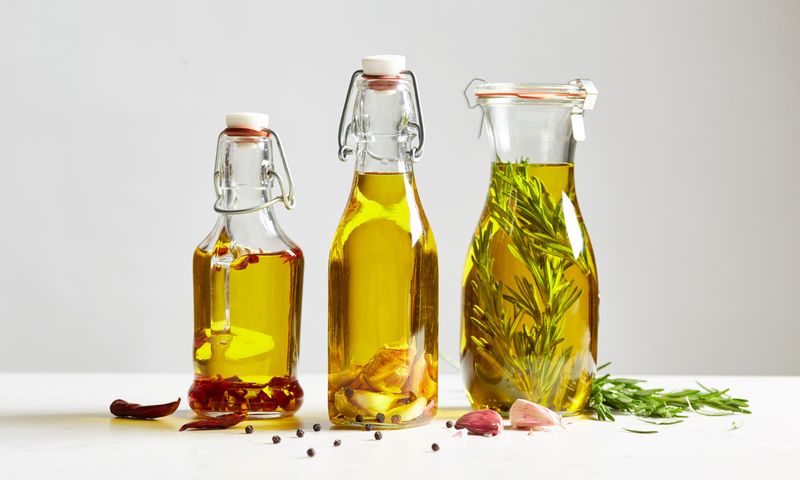
That half-used bottle of olive oil from last year’s cooking spree could be harboring unpleasant surprises. Cooking oils don’t spoil with obvious mold or bacteria – they go rancid through oxidation, developing free radicals that can actually harm your health over time.
Your nose knows best when it comes to oil quality. Fresh oil smells clean and characteristic of its source, while rancid oil develops a crayon-like, painty, or putty-like aroma. Some people describe it as smelling like wet cardboard or old crayons.
Store oils away from heat and light, and use within 3-6 months after opening. Refrigeration extends shelf life for most oils except olive oil, which can become cloudy but is still usable when brought back to room temperature.
7. Chocolate Syrup
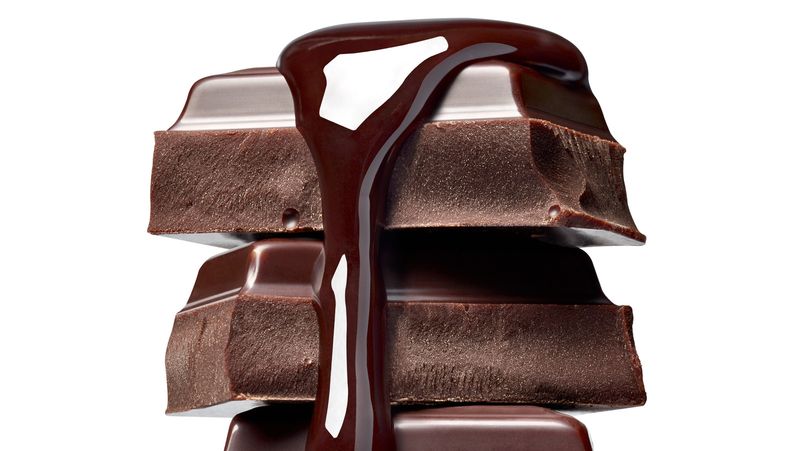
The chocolatey goodness waiting in your pantry has a secret – once opened, it needs refrigeration to stay fresh. Commercial chocolate syrups contain preservatives but still require cold storage after breaking the seal.
Forgotten chocolate syrup can develop mold that’s not always visible to the naked eye. Even before visible spoilage, flavor compounds break down and sweetness diminishes. The texture might also change, becoming thicker or developing an unpleasant aftertaste.
Check your bottle – most manufacturers recommend refrigeration after opening with a 6-month use-by timeframe. That half-used bottle from last summer’s ice cream sundaes? Better to replace it before your next chocolate milk craving strikes.
8. Opened Tomato Sauce
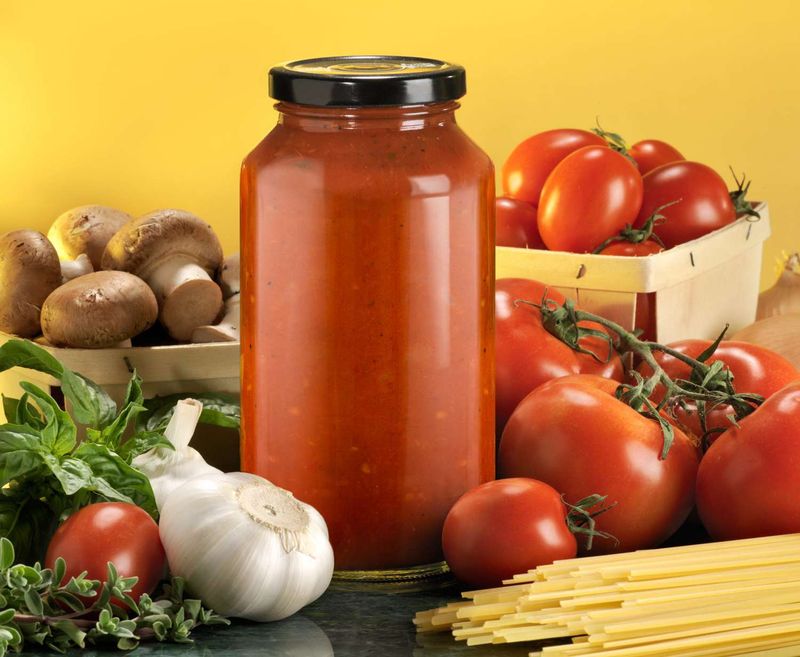
The partial jar of pasta sauce pushed to the back of your pantry is a microbial playground waiting to happen. Tomato-based products are particularly vulnerable to mold growth once opened due to their moisture content and pH level.
Many home cooks make the mistake of keeping opened tomato sauce at room temperature. The acidic nature gives a false sense of security, but it’s not enough to prevent spoilage. Even before visible mold appears, bacteria can multiply to concerning levels.
Always transfer leftover sauce to a clean container and refrigerate promptly. Most opened tomato products should be used within 5-7 days. For longer storage, freezing in meal-sized portions works beautifully – just label with the date!
9. Jam and Jelly
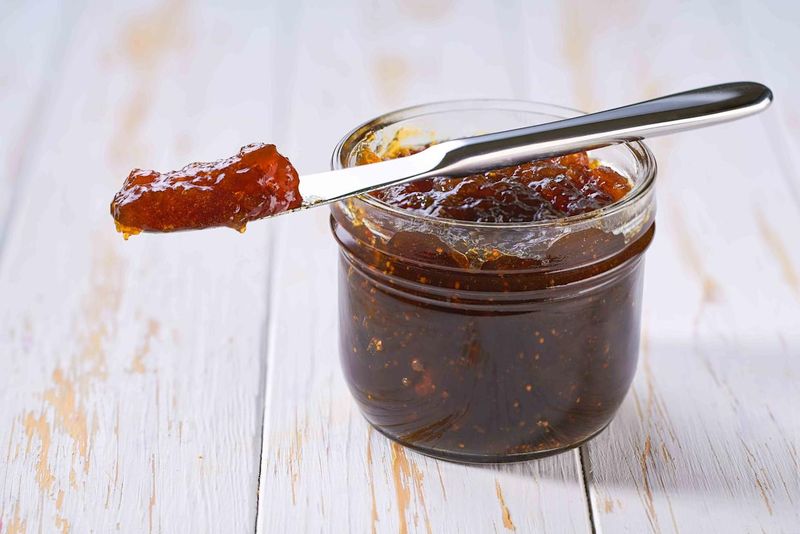
Grandma might have kept her preserves in the pantry, but modern jams and jellies need refrigeration after opening. Despite their high sugar content, today’s commercial products often contain less sugar than traditional recipes, making them more susceptible to mold growth.
The telltale fuzzy patches of mold can begin growing invisibly before becoming obvious. Even scraping off visible mold isn’t safe – microscopic filaments often extend throughout the product. Some molds produce mycotoxins that can cause digestive distress or allergic reactions.
Most opened jams remain safe in the refrigerator for 1-3 months. If you notice any color changes, off smells, or textural differences before that time, it’s best to discard the product regardless of visible mold.
10. Unsalted Butter
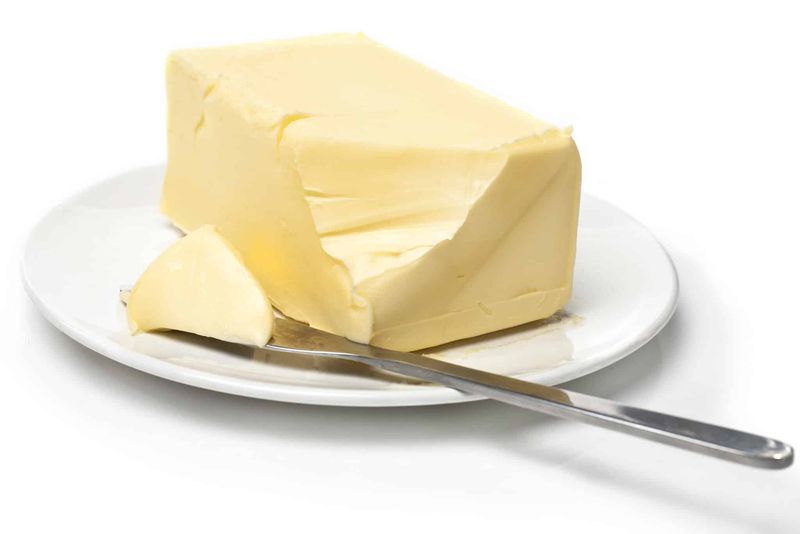
The creamy stick of unsalted butter sitting in your butter dish might be deteriorating faster than you realize. Without salt’s natural preservative properties, unsalted butter is significantly more vulnerable to oxidation and bacterial growth.
Butter absorbs odors from your refrigerator like a sponge. That innocent-looking stick can pick up flavors from nearby foods, developing off-notes before visible signs of spoilage appear. The fat molecules also break down through oxidation, creating a rancid taste.
Keep unsalted butter refrigerated in its original wrapper or a butter bell with water seal. For longer storage, freeze portions wrapped in parchment and sealed in freezer bags. Properly stored, it stays fresh refrigerated for about two weeks compared to salted butter’s month-long shelf life.
11. Opened Red Wine

That half-finished bottle of Cabernet from Friday night is undergoing chemical changes that affect both flavor and health benefits. Once exposed to oxygen, wine begins transforming – first beneficially through aeration, then detrimentally through oxidation.
Oxidation converts alcohol to acetaldehyde and eventually acetic acid, giving wine a vinegary taste. The vibrant fruit flavors fade, tannins soften inappropriately, and the wine’s character diminishes dramatically. Many wine enthusiasts don’t realize how quickly this process occurs.
Refrigeration slows oxidation considerably. Use a vacuum pump wine stopper for best results, and consume refrigerated red wine within 3-5 days of opening. If you can’t finish it as a beverage, use older opened wine for cooking rather than drinking.
12. Fresh Herbs
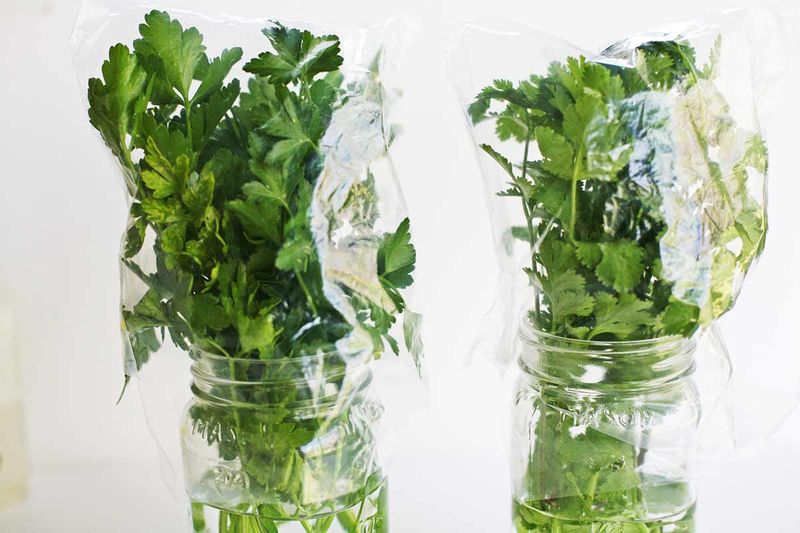
Fresh herbs bring vibrant flavors to your cooking, but they’re among the quickest foods to deteriorate in your kitchen. Most people store herbs incorrectly, drastically shortening their usable lifespan from days to mere hours.
Moisture is both friend and enemy to fresh herbs. Too much causes rot and slime; too little leads to wilting and desiccation. Delicate herbs like cilantro and parsley need to be treated like cut flowers – stems trimmed and placed in water, but with a loose bag over the leaves to maintain humidity without condensation.
Basil is the exception – it blackens in the refrigerator and should stay at room temperature. For all herbs, wash just before using rather than during storage to prevent mold growth and nutrient loss.
13. Tortillas
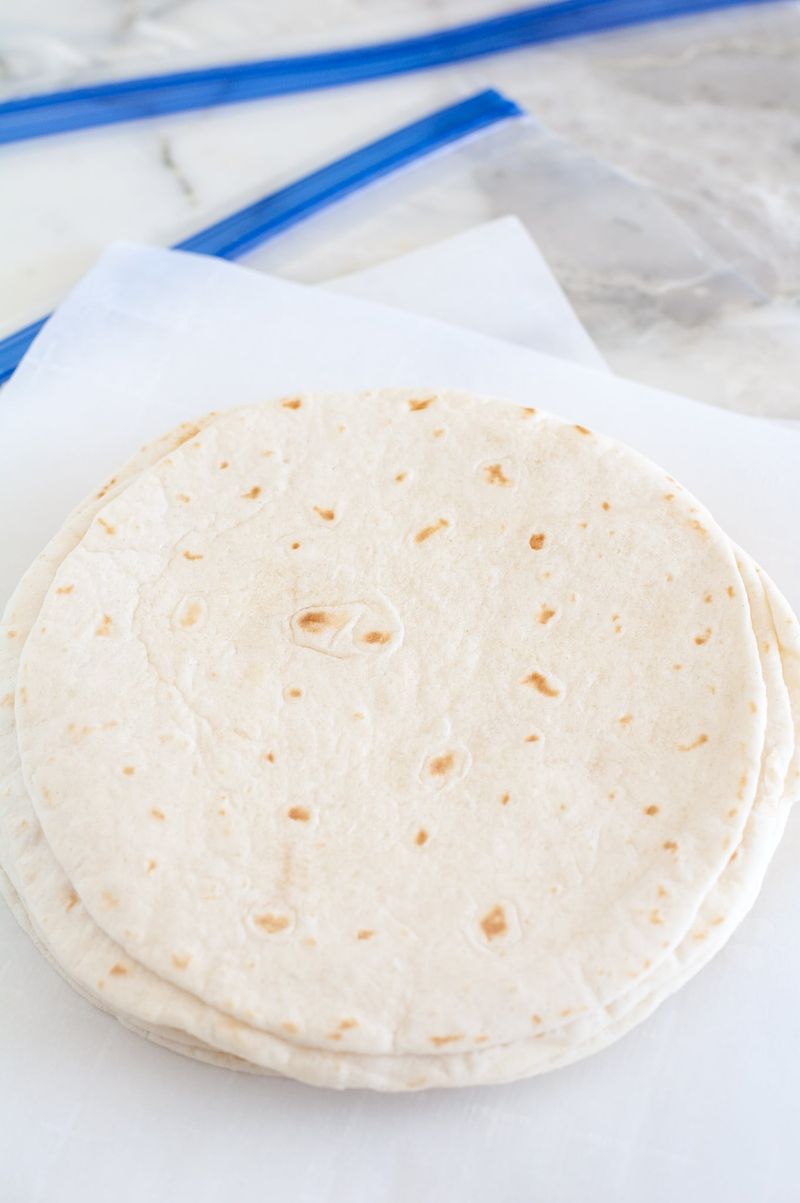
The stack of tortillas left on your counter might look harmless, but they’re a prime target for rapid mold growth. Their high moisture content and neutral pH create perfect conditions for fungi to flourish, often within days of opening the package.
Commercial tortillas contain preservatives that extend shelf life while sealed, but once that package opens, the clock starts ticking. Homemade tortillas are even more vulnerable, sometimes developing mold within 48 hours at room temperature.
Refrigeration extends shelf life to 7-10 days for most commercial tortillas. For longer storage, freeze with parchment paper between each tortilla for easy separation. The white or blue-green spots of mold that develop aren’t the harmless kind – they can produce mycotoxins that cause digestive distress.
14. Corn on the Cob

Fresh corn’s remarkable sweetness begins disappearing the moment it’s harvested. The natural sugar conversion to starch accelerates at warm temperatures, making room-temperature storage particularly detrimental to flavor quality.
Many shoppers bring home corn and leave it on the counter, not realizing they’re sacrificing the very sweetness they paid for. The conversion happens so quickly that corn can lose up to 25% of its sugar content in just one day at room temperature.
Keep corn refrigerated with husks intact until ready to use. The ideal storage method is immediate refrigeration in the vegetable crisper with husks on. For longer storage, blanch and freeze corn kernels cut from the cob – they’ll maintain quality for up to 12 months frozen.
15. Pure Maple Syrup
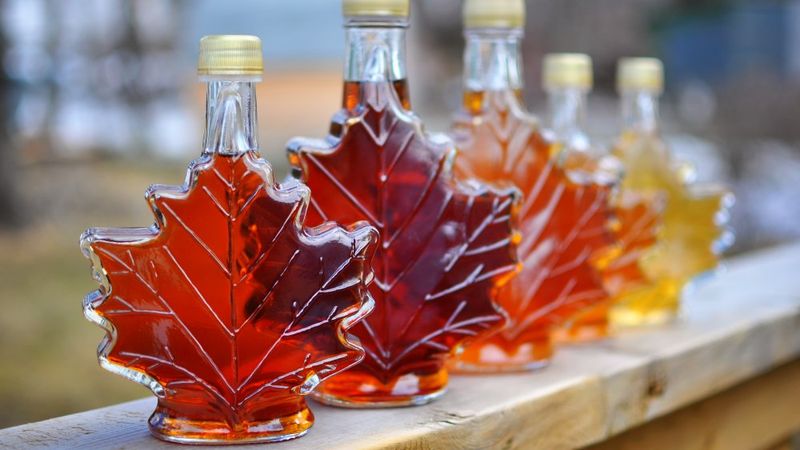
Real maple syrup lacks the preservatives found in pancake syrups, making it surprisingly vulnerable to mold growth. The natural sugars provide food for mold spores that inevitably find their way inside the bottle during pouring.
Maple syrup’s water activity level is just low enough to prevent bacterial growth but not enough to stop certain molds. The good news? Finding mold floating on your syrup isn’t necessarily cause for throwing it away. Unlike most foods, maple syrup can be salvaged by removing the mold and bringing the syrup to a full boil.
Prevention is better than cure – always refrigerate after opening and expect a shelf life of 6-12 months refrigerated. For longer storage, freeze maple syrup indefinitely with no quality loss. Just leave headspace in the container for expansion.
Leave a comment